OK, there are bird guides and there are bird guides, but you have never seen anything like The Warbler Guide by Tom Stephenson and Scott Whittle, published by Princeton University Press!
This nearly 560 page bible on North American warblers covers everything from bird topography and what to notice on a warbler, to listening to warbler songs, individual species accounts (including range and migration maps) and comparison species, like this one for the Blackburnian Warbler.
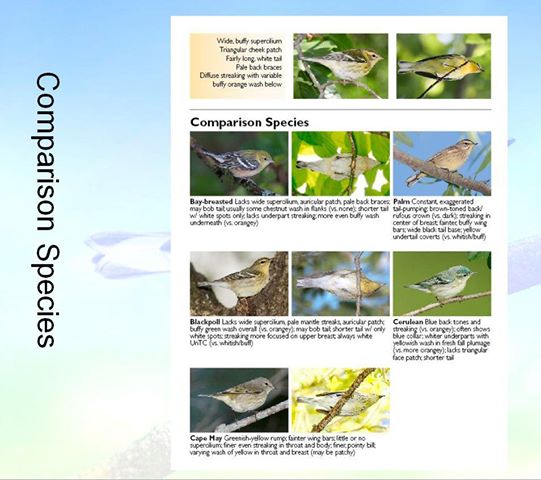
These species accounts are the heart of The Warbler Guide, optimized to make them easy to use and effective in helping with identification. For example, they include distinctive views and additional photos of the selected species.
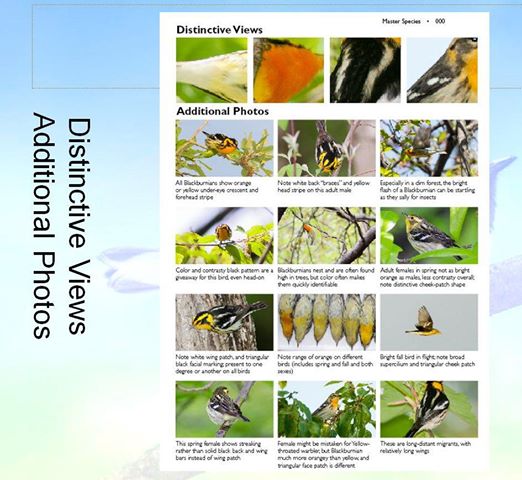
And if that weren’t enough, they also have a section on aging and sexing the bird you are seeing for the hard core birders.
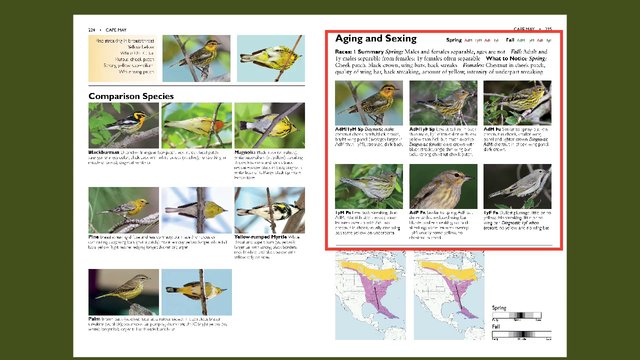
As one birder who is warbler challenged, the quick finders guides are, in my opinion, one of the best features of this book. They are there as an index to the book to help you get to the bird you are interested in as quickly as possible. There are eight visual quick finders including sideview, 45 degree and under views, western quick finder, eastern fall and spring quick finders, undertail, and finally face quick finders.
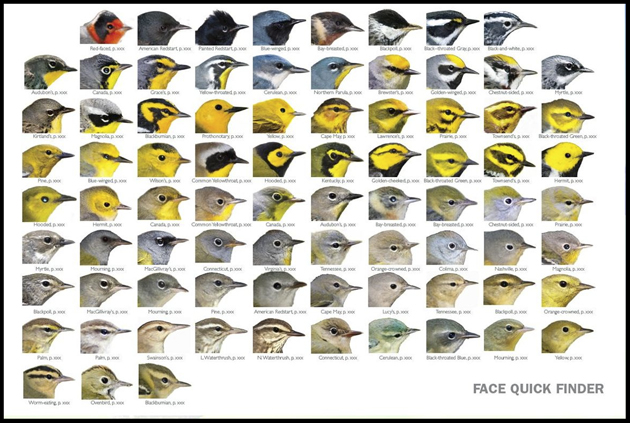
Right now you are probably thinking, wow, that’s a lot of information in a bird guide, but wait, there’s more. I haven’t even spoken of the warbler vocalizations sections of the book!
To begin with, there is a section on understanding sonograms which is the beginning of a whole new system for learning bird calls and songs. This is followed by “How to Listen to Warbler Songs.” This introduction to warbler vocalizations consumes over 35 pages of The Warbler Guide and it is one of the most important sections of the book.
Following the vocalization introduction section, they have also included over 20 pages of warbler song finder charts which do for bird songs what the visual finder pages do for the visual identification of the species.
Now, the audio companion to The Warbler Guide is available for download. The audio companion for the book contains every audio example (over 1,000) found in the book and all of the songs and calls of each master species, as well as the comparison species, are presented in book order. This audio companion sells for a mere $5.99
Here are some examples of the Black-throated Blue Warbler:
Black-throated Blue Warbler Finder Buzzy Rising
To make this guide even more user friendly, all the species accounts are arranged in alphabetical order to make them easier to find.
You might think all of these attributes I have described make this book a must have guide for any self respecting birder that wants to increase his or her ability to identify warblers in the field, and you would be right. But, even if you want to leave warbler ID to those exceptional birders that can identify a species as it flies from its leaf hidden location in a nearby tree, to a tree top 50 yards away, or the one that calls out the specie’s names from an imperceptible chirp as you walk down the trail , you would want The Warbler Guide because of all the gorgeous warbler photos.
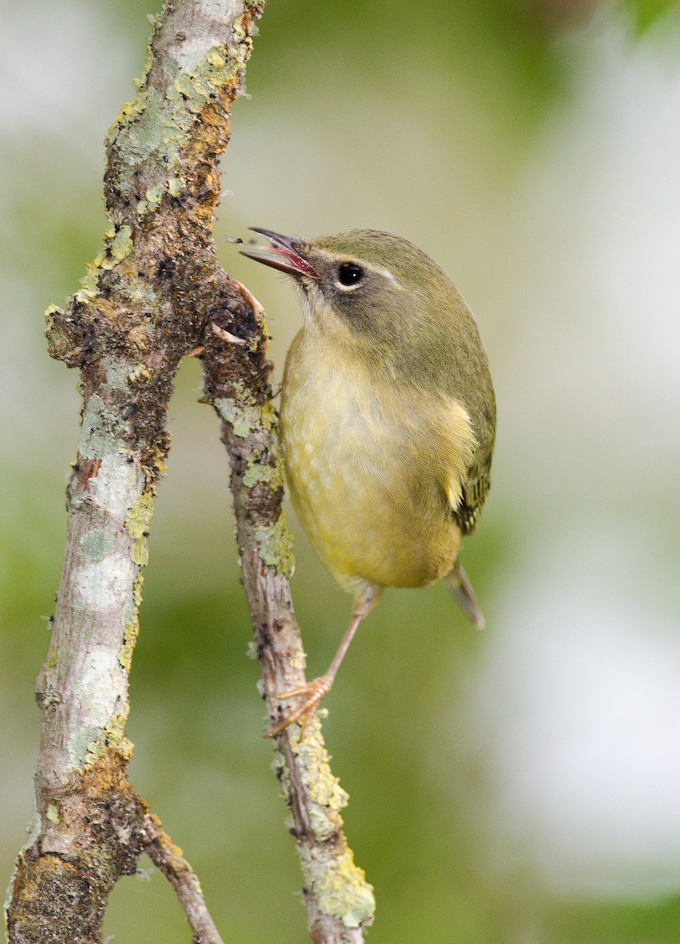 Black-throated Blue Warbler (Setophaga caerulescens) Female photo by Scott Whittle
Black-throated Blue Warbler (Setophaga caerulescens) Female photo by Scott Whittle
If you want more information on The Warbler Guide, check out these nine videos narrated by Scott Whittle that walk you through this amazing publication.
UPDATED 7/26! The Warbler Guide has graciously provided downloads of their quick finder illustrations so you can laminated them and carry them with you while birding. You can find them here. I have posted a few of them here so you know what you’re missing. Go ahead and download them, then buy the book to see all the other ID aides!
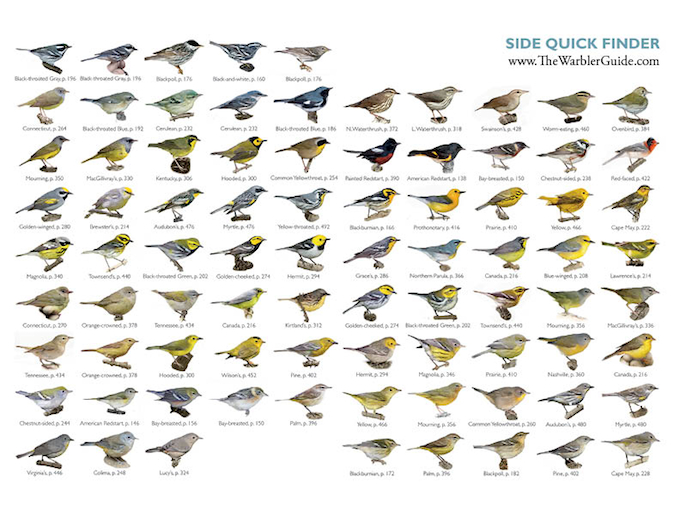
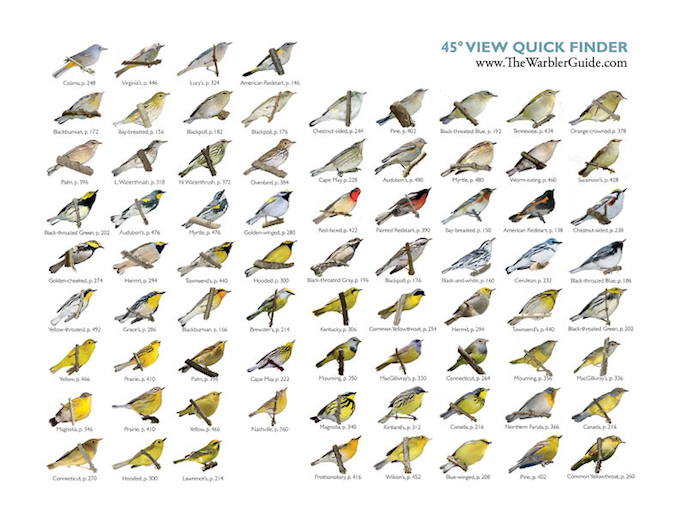
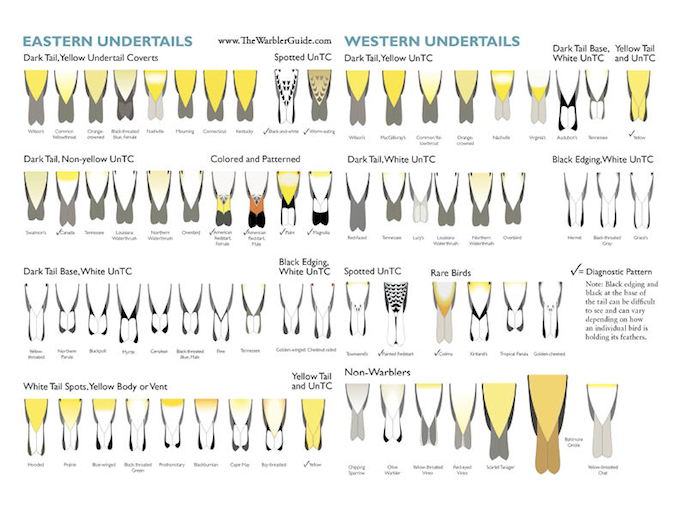

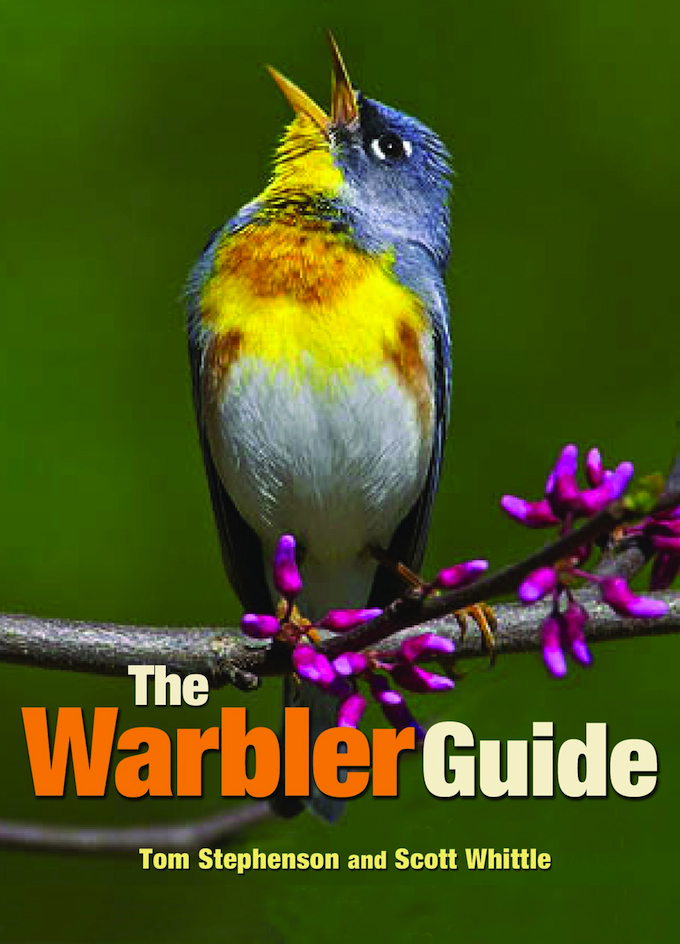








Comments on this entry are closed.
Very nice review, Larry! I’ve been hinting around the house that this sure would be nice to have. Hope The Boss has been listening! 🙂
Larry, I’m definitely warbler challenged! I didn’t know about this book and will be getting it. Because I’m out and about with my camera, sans binoculars, I often don’t even get the barest glimpse of the fast-moving dot that looked like a warbler. This will help me tremendously. To date, I can identify just a handful of warblers on sight … the easy ones like Yellow-rumped or Townsend’s. Thanks for this great review.
Hi Larry,
I will have to go to Branes & Noble and get this book. I love the Warblers, great information, thanks for sharing.
We only have a hand full of Warbler here too! Got a good shot of a Yellow-rumped Warbler last Sunday. Check it out.
Michael
Caught On Camera